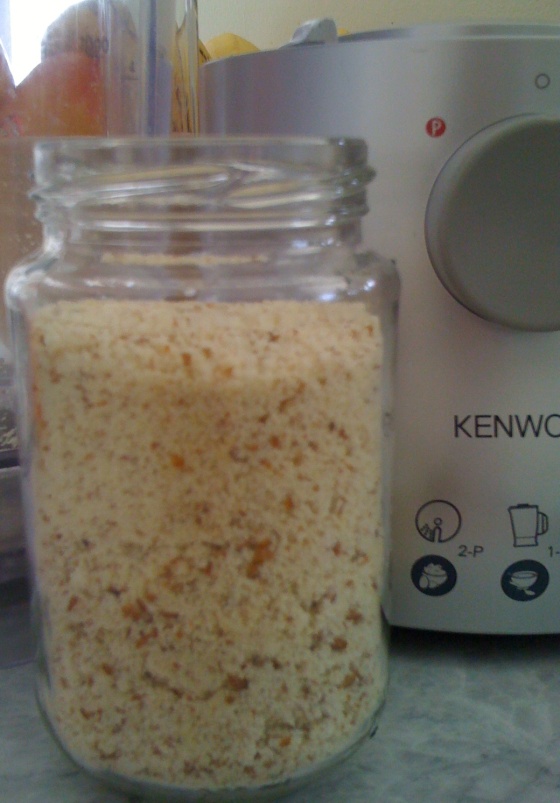In case you haven’t noticed here or here, I love almonds and almond products. Besides being delicious, they are also very healthy, don’t believe me? Check out this list and you will fall head over heels with almonds:
- Lower LDL-Cholesterol and Reduce Your Risk of Heart Disease
So, almonds is a high-fat food that’s good for your health? YES!!
Almonds are high in monounsaturated fats, the same type of health-promoting fats as are found in olive oil, which have been associated with reduced risk of heart disease.
A study published in the British Journal of Nutrition indicates that when foods independently known to lower cholesterol, such as almonds, are combined in a healthy way of eating, the beneficial effects are additive – yep, I can attest that!
- Vitamin E: In addition to their cholesterol-lowering effects, almonds’ ability to reduce heart disease risk may also be partly due to the antioxidant action of the vitamin E found in the almonds, as well as to the LDL-lowering effect of almonds’ monounsaturated fats. (LDL is the form of cholesterol that has been linked to atherosclerosis and heart disease).
- Magnesium: Magnesium is Nature’s own calcium channel blocker. When there is enough magnesium around, veins and arteries breathe a sigh of relief and relax, which lessens resistance and improves the flow of blood, oxygen and nutrients throughout the body. Studies show that a deficiency of magnesium is not only associated with heart attack but that immediately following a heart attack, lack of sufficient magnesium promotes free radical injury to the heart. – Eat your almonds!
- Potassium: Potassium is an important electrolyte involved in nerve transmission and the contraction of all muscles including the heart, is another mineral that is essential for maintaining normal blood pressure and heart function. Almonds promote your cardiovascular health by providing 162 mg of potassium and only 0.2 mg of sodium, making almonds an especially good choice to in protecting against high blood pressure and atherosclerosis.
- Almonds Provide Double-Barreled Protection against Diabetes and Cardiovascular Disease
Almonds appear to not only decrease after-meal rises in blood sugar, but also provide antioxidants to mop up the smaller amounts of free radicals that still result. (Jenkins DJ, Kendall CW, Journal of Nutrition)
Further research shows that eating almonds along with a high glycemic index food significantly lowers the glycemic index of the meal and lessens the rise in blood sugar after eating. (Jones AR, Kendall CW, Metabolism)
- Whole Almonds (with Skins) Provide Most Heart Healthy Benefits
The flavonoids found in almond skins team up with the vitamin E found in their meat to more than double the antioxidant punch either delivers when administered separately, shows a study published in the Journal of Nutrition.
- Daily Consumption of Almonds May Help You Eat a Healthier Diet
If you’ve been reluctant to add almonds to your diet because of their high calorie count, a study published in the British Journal of Nutrition may help convince you to give these delicious, nutrient-dense nuts a try.
In this study, the normal eating patterns of 43 men and 38 women were followed for 6 months. Then they were told to eat approximately 2 ounces or one-quarter cup of almonds daily but were given no other instructions about changing their diet, and followed for an additional 6 months. By the end of the study, a number of very beneficial changes were seen to naturally occur.
- More Help with Energy Production
- Manganese and Copper: Almonds are a very good source of manganese and copper, two trace minerals that are essential cofactors of a key oxidative enzyme called superoxide dismutase. Superoxide dismutase disarms free radicals produced within the mitochondria (the energy production factories within our cells), thus keeping our energy flowing. Fortunately, Mother Nature supplies both mineral cofactors in almonds.
So, besides eating raw almonds, you can also incorporate them into your diet, either with almond milk, almond butter, or, if you fancy the baked goods as I do, almond flour to replace normal wheat flour.
If you are convinced, you can either run to your regular organic shop and splurge on almond flour, or, you can save yourself a couple of Euro/Dollars/other currencies and DIY it! How? So simple!
Almond Flour DIY
- What do you need:
- Raw almonds peeled or unpeeled– the quantity is up to you, 1 cup of raw almonds turn into 1 cup of almond flour, give it or take it
- How you do it
- Add the oats to the bowl of your food processor or blender and turn it on – if food processor, pulse it – let it go until you have fine powder.
Source: The Worlds Healthiest Foods
Did you looove this DIY? I am sure you will also love all the other incredibly healthy recipes I shared here for you! Be sure to follow the blog and you will never miss an update!
I would love to hear from you! You can use the comments above and share your ideas, recipes, suggestions, or even better, your own experience with almonds/almond flour benefits!
Share the love!
stay healthy, stay beautiful






